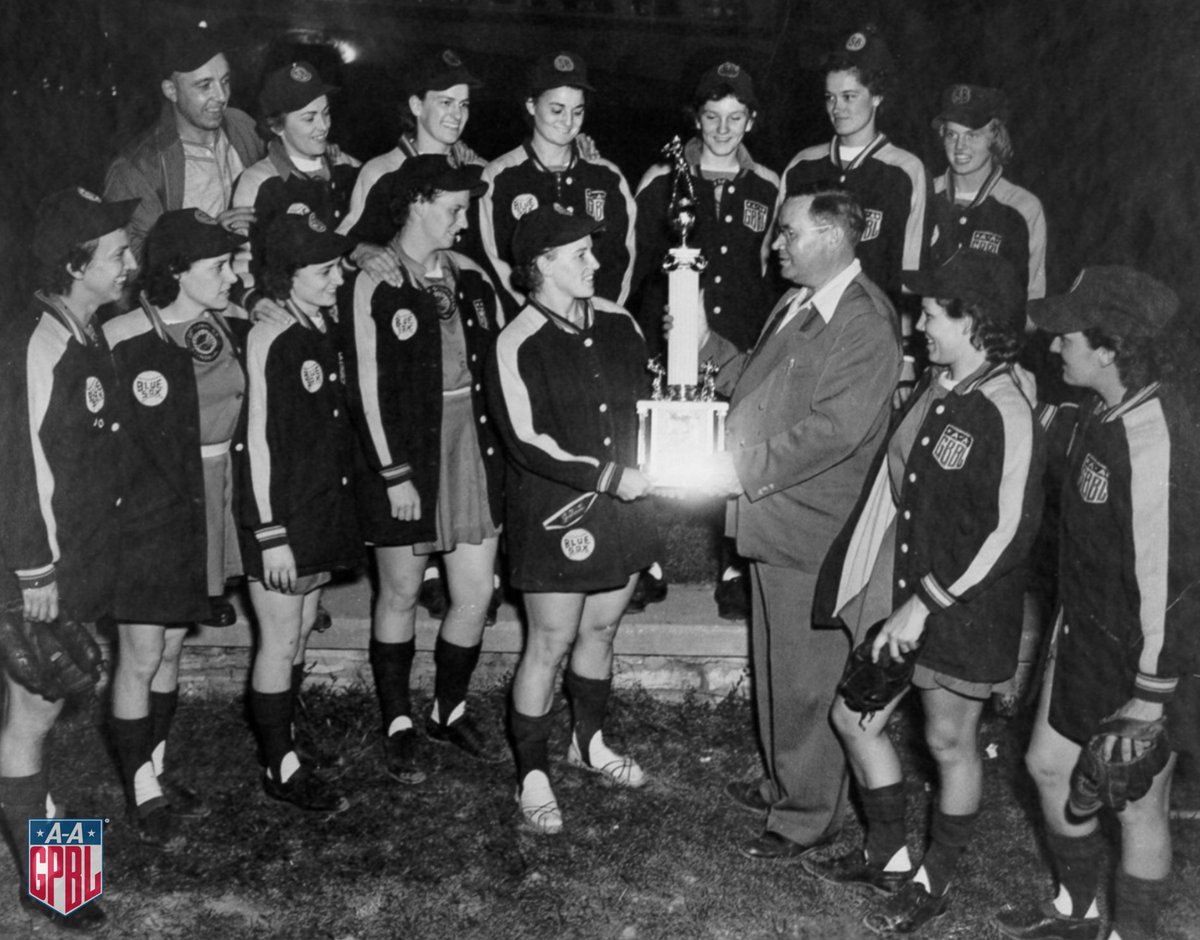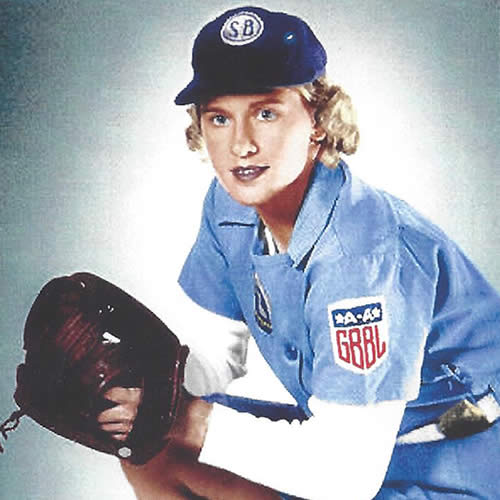Hilarious scene. It was just on TV last week, and it always amuses.
"There's no crying in baseball!" is another classic from that movie. I use it all the time in variations.
@musiclady She made a great film that still played a little loose with a few facts about the AAGPBL---including that yes, the Racine Belles
did win the league's first World Series . . . but the Rockford Peaches weren't their victims. The Belles beat the Kenosha Comets in that first Series. In the real life of the league, the Peaches did prove the Biblical axiom about the last becoming the first: they finished dead last in the original four-team league but became the Yankees of the league soon enough---they won the most league championships of any of the AAGPBL franchises, four. (1945, 1948-50.)
I unearthed those and more when writing in 2013 after the death of Pepper Paire-Davis, including that the Peaches really
were the most theatrical players in the league . . . but if Madonna's All-the-Way-Mae Mordabito had caught that fly ball sliding and with her cap in the real league, the batter would have been ruled safe: the league had a rule against catching a ball with anything other than your glove or your hand. The Tom Hanks character, Jimmy Dugan, was an apparent stand-in for actual Hall of Fame outfielder Jimmie Foxx who
did manage an AAGPBL team---the Fort Wayne Daisies in 1952. Foxx managed the Daisies to the first round of the league's playoff, where the real Peaches knocked their skirts off in three games.
In case you forgot or didn't know before: The AAGPBL began returning to the public eye when Paire-Davis herself---the film's Dottie Hinson (Geena Davis) was modeled partly on her and partly on another player, Dorothy Kaminshek---was the co-author of the league theme song you heard the girls warbling a few times in the film. The Racine Belles' motto (you saw it on the back of their team bus), "Dirt in the Skirt," became the title of Paire-Davis's 2009 memoir. And, just like obnoxious little Stillwell remembered his mother believing, Paire-Davis
did say playing baseball was the happiest time of her life.
The likely reason to focus on the Peaches for the film was probably that they were one of two teams to stay the league's entire twelve-year course; the other was the South Bend Blue Sox. The league's last championship team was the Kalamazoo Lassies, who moved to Kalamazoo from Muskegon; they won that title in 1954.
One Peach
did become a bona-fide Hall of Famer---pitcher Olive Little, into the Canadian Baseball Hall of Fame. In the league's first season she was a 20-game winner and threw a no-hitter while she was at it; she finished her life in the league having thrown four no-hitters (she was, in that regard, the league's Sandy Koufax a decade and a half before Koufax became Koufax) and rolled a lifetime 2.23 earned run average. The bad news: Olive Little died a year before the real AAGPBL was inducted as a league into Cooperstown.
Paire-Davis was one of the league's five top RBI women. (The others: Lib Mahon, Eleanor Callow, Inez Voyce, and Dorothy Schroeder.) Joanne Weaver won the league's batting title in its final three seasons including a .429 batting average in 1954. Her sister, Betty Foss, won the two previous batting titles before she started her string. The sad news is that both sisters eventually died of Lou Gehrig's disease. The league also had two 30-game winners, Helen Nicol (31-8 for the 1943 Comets) and Connie Wisniewski (who did it twice for the Milwaukee Chicks, going 32-11 in 1945 and 33-9 in 1946; her ERA over those two seasons: 0.86).
The league even had its own version of Ozzie Smith---outfielder Faye Dancer had the habit of cartwheeling and backflipping out to her position when she played for the Minneapolis Millerettes (who stayed there one season before moving to Fort Wayne to become the Daisies) and the Peoria Redwings (who formed in 1946 and stayed in the league until 1952). Dancer also happened to be a childhood friend of Paire-Davis.
The league was almost forgotten until June Peppas (who joined the league in 1948) launched an insiders' newsletter in 1980, which led to the forming of the AAGPBL Players Association. That group held its first reunion in Chicago two years later. (They probably picked Chicago because real-life Cubs owner Phil Wrigley created the league in the first place.) Five years after that reunion came the documentary
A League of Their Own, written by one of the sons of the league's 1945 batting champion, Helen Gahagan. (Her other son, Casey Candaele, became a major league baseball player for a few years in the late 80s-early 90s, largely with the Houston Astros.)
The league's one wounding flaw: they wouldn't admit black players even after major league baseball's colour line was broken in 1947.
But if you happen to visit Rockford, Illinois, you can find the Peaches' home field still---in 2010, Beyer Stadium was restored, including the original Peaches ticket booth.
Lassies pitcher/outfielder Doris Sams may have called Penny Marshall's film "30 percent truth and 70 percent Hollywood," but the surviving AAGPBL players appreciated Marshall making the film at all. Marshall, in fact, was a frequent presence at the league's subsequent reunions and never stopped supporting their continuing efforts to keep the league's memory alive.

That's the 1952 South Bend Blue Sox hoisting the league's championship trophy; pitcher Jean Faut is actually holding it. She led the league that year with an 0.93 ERA. Here's one of the only known colour photos of an AAGPBL player, in this case Faut herself:

Jean Faut accomplished something no pitcher in any league, either gender, has done otherwise---she pitched two no-hitters and they were
both perfect games: she beat the Peaches with the first one in 1951, then beat the Lassies with the second in 1953. She was inducted into the National Women's Baseball Hall of Fame in 2012. And she's still alive at 93.